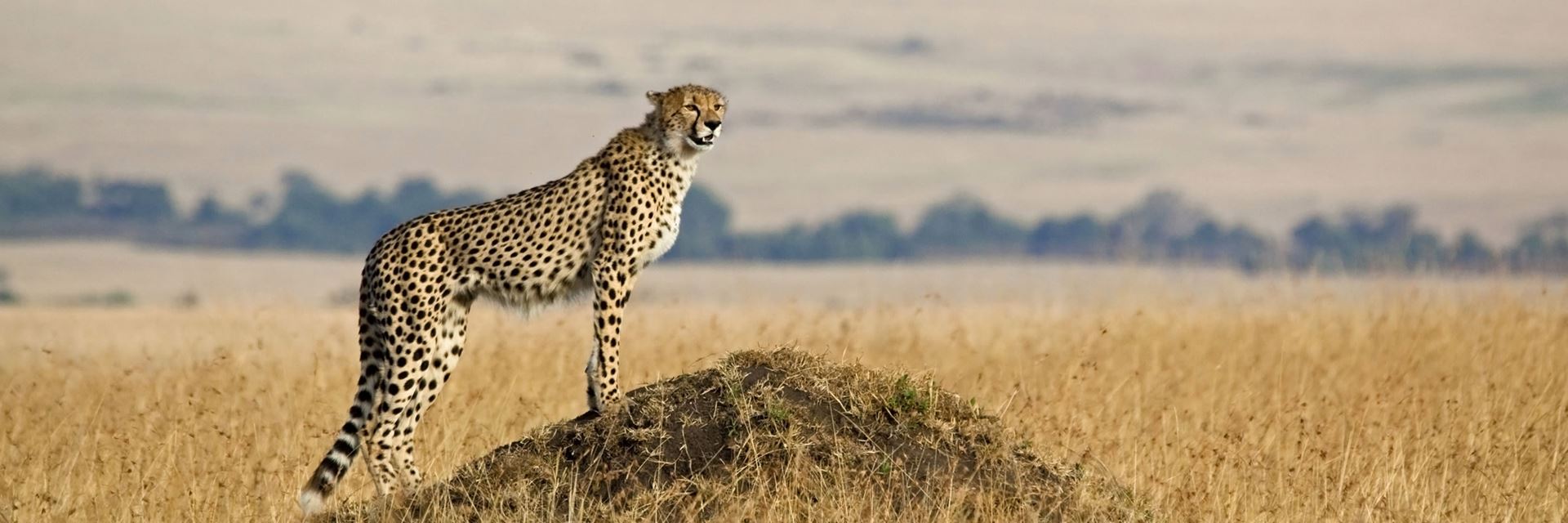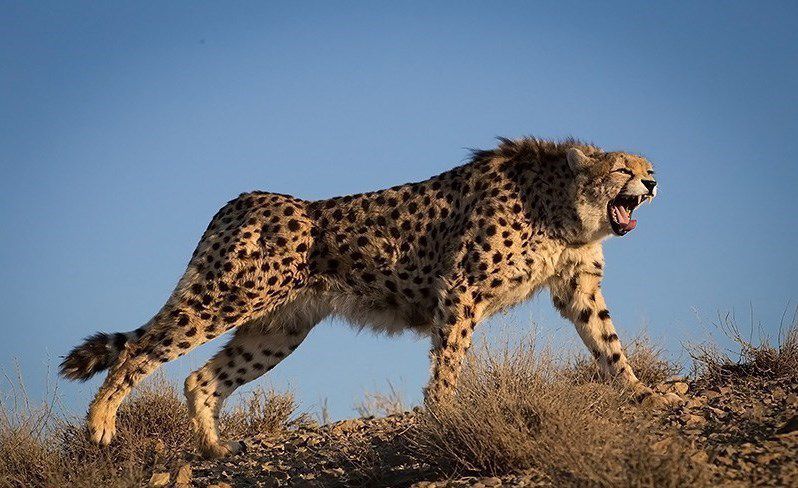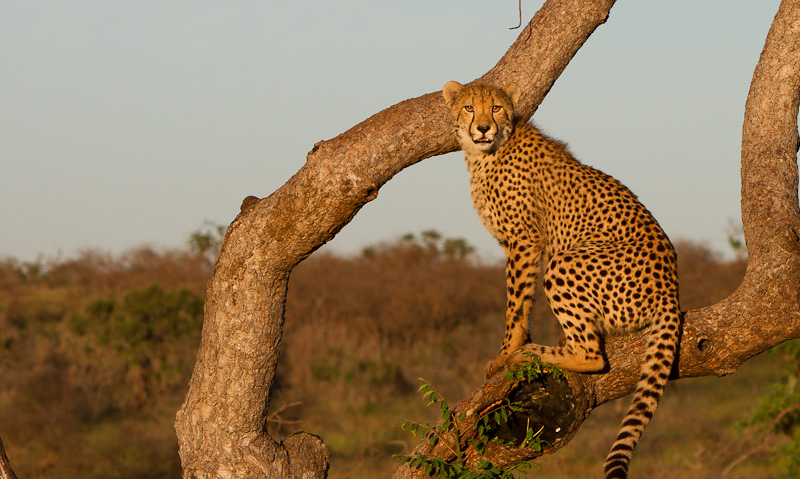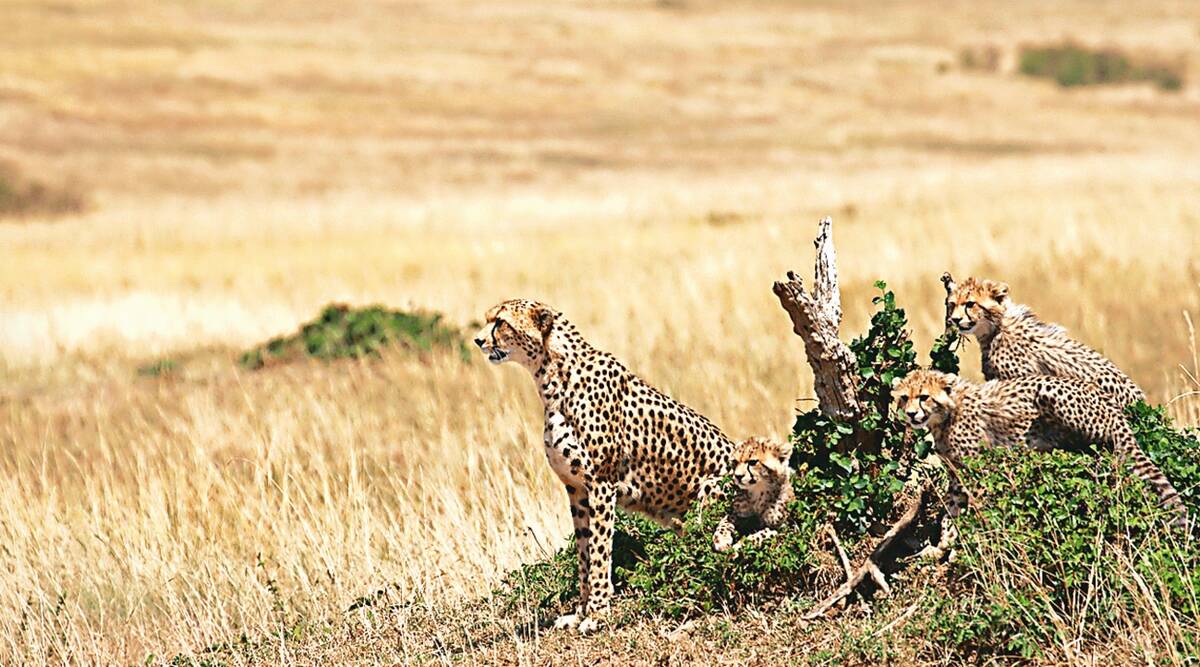STATUS
Near Threatened


Fastest mammal on land, the cheetah can reach speeds of 60 or perhaps even 70 miles (97 or 113 kilometers) an hour over short distances. It usually chases its prey at only about half that speed, however. After a chase, a cheetah needs half an hour to catch its breath before it can eat.
The cheetah's excellent eyesight helps it find prey during the day. The cheetah is hard to see because its spotted coat blends with the tall, dry grass of the plains. Suddenly, the cheetah makes a lightning dash. It knocks its prey to the ground and then bites its throat. Once found throughout Asia and Africa, cheetahs today are racing toward extinction. Loss of habitat and declining numbers of their prey combine to threaten the future of these cats. Cheetahs live and hunt mainly in open grasslands and bushy areas in parts of Africa and the Middle East.
Cheetahs eat small- to medium-size animals, such as hares, impalas, wildebeest calves, and gazelles.
Because of their size, strength, and predatory skills, cheetahs are considered one of the "big cats" Tigers, lions, leopards, jaguars, and cougars are also part of this grouping.

STATUS
Near Threatened

SCIENTIFIC NAME
Acinonyx jubatus

POPULATION
Only 7,100 left in wild

LENGTH
1.1 - 1.5 m

WEIGHT
21 - 72 kg

HABITAT
GRASSLANDS
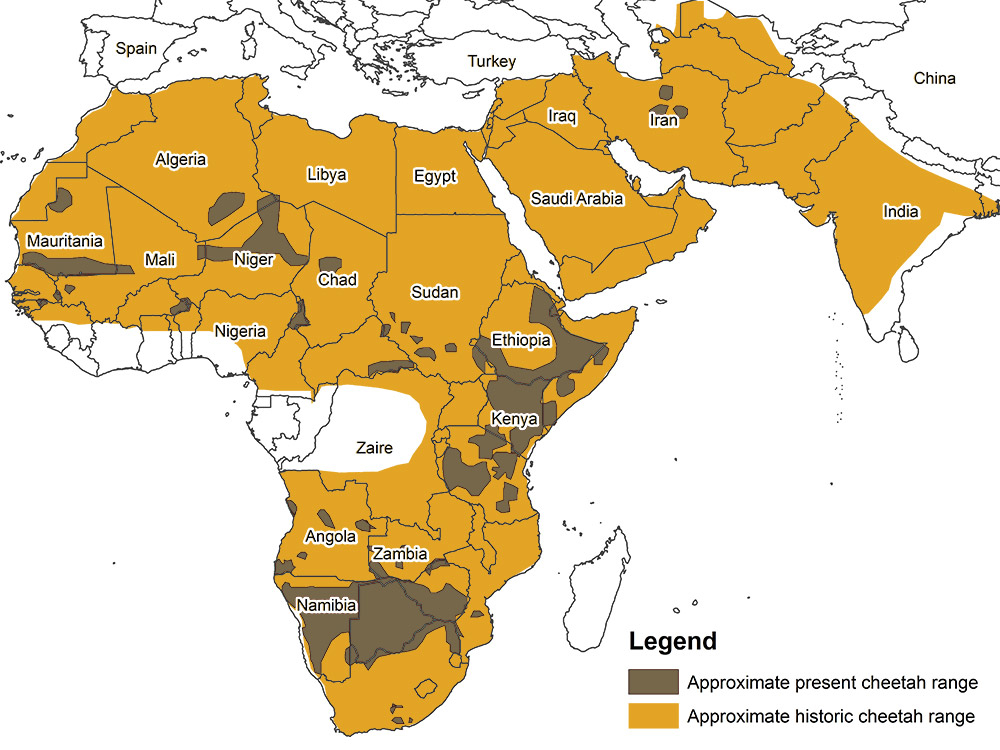
The cheetah serves a special role in its ecosystem. Cheetahs are one of the most successful hunters on the savanna but their kills are very often stolen by larger carnivores or predators that hunt in groups.
Adult cheetah's weight averages between 75 and 125 pounds. They can measure from 40 to 60 inches in length, measured from the head to the hind quarters. The tail can add a further 24 to 32 inches bringing the total overall length up to 7.5 feet. On average, cheetahs stand 28 to 36 inches tall at the shoulder.
The cheetah's undercoat ranges in color from light tan to a deep gold and is marked by solid black spots. These spots are not open like the rosettes found on a leopard or jaguar's coat, which is one way to quickly identify the cheetah.
Cheetahs are visual hunters. Unlike other big cats cheetahs are diurnal, meaning they hunt in early morning and late afternoon. Cheetahs climb 'playtrees' or termite mounds to get an optimal vantage point for spotting prey against the horizon.
Cheetah cubs are very active and playful. Trees provide good observation points and allow for development of skills in balancing. The cubs semi non-retractable claws are sharper at this age and help them grip the tall 'playtrees' they climb with their siblings.
